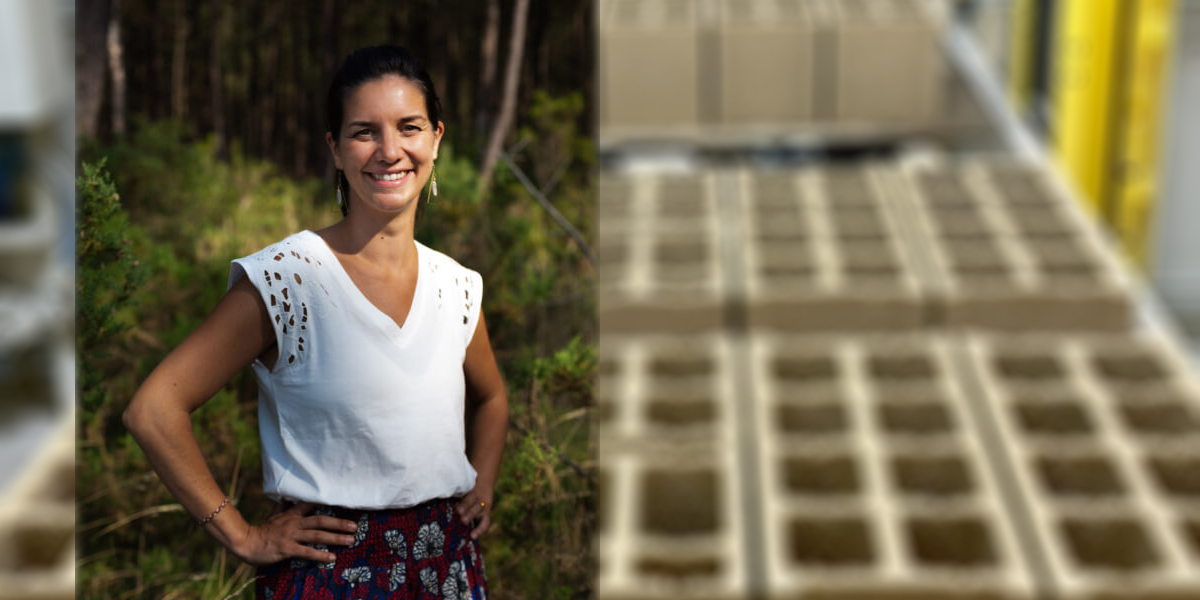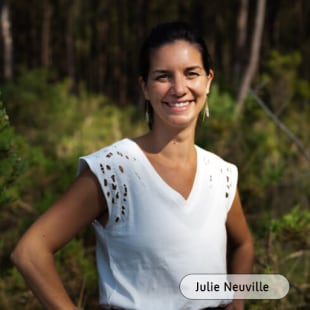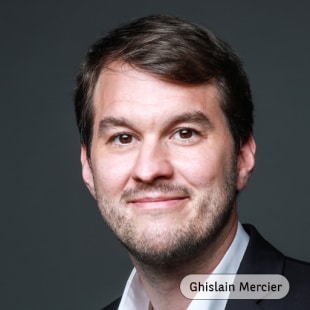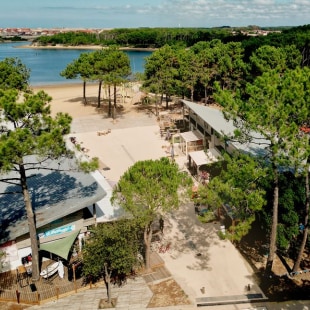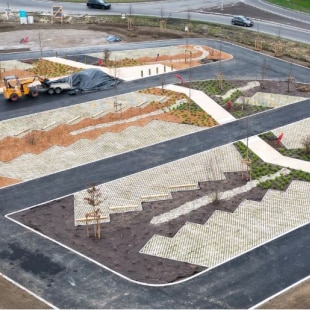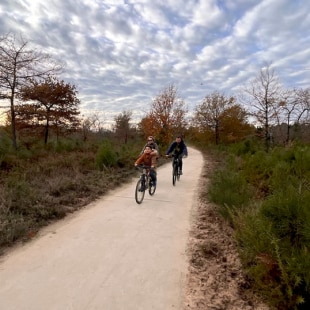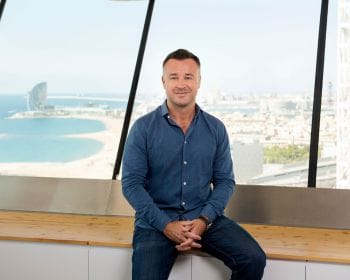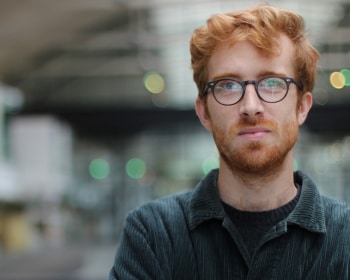Could you tell us a bit about Materrup ?
Julie Neuville: Materrup is first and foremost a name that literally means “My earth – up” (in French: Ma terre – up), but also “matter” or “material”, i.e. the subject at hand. We are five years old and still a young industrial company having an impact. We want to do more with less. Our aim is to significantly and immediately reduce cement’s carbon footprint. Mathieu and Charles Neuville, twin brothers and founders of the company, have developed disruptive technology for manufacturing cement from uncalcined clay, which required five years’ research and development.
Manufactured at our plant in Saint-Geours-de-Maremne (Landes, southwest France), our cement contains 70% raw clay from recycling or waste, whereas conventional cement uses just 5% clay. As a result, we reduce energy consumption by 50% and CO2 emissions by 50%.
Above all, we are the only company in the world to offer this technology based on recycling and waste, a resource that is available in abundance everywhere.
Ghislain Mercier : Making cement from uncalcined clay, without using gas or oil, that's really something. It's a very practical solution for rapidly decarbonizing the construction industry, since cement is one of the most widely used materials in the world. The promise of a significant reduction in emissions without disrupting the practices of construction companies is seductive. That is why we became interested in Materrup when we visited the Saint-Geours-de-Maremne plant on the day it was inaugurated in September 2022.
Who are you offering this solution to?
Julie Neuville: Our cement has been used on development sites in several towns in the Landes region, including Dax (street furniture), Soustons (a public square), Saint-Geours-de-Maremne (a skatepark) and further south in Anglet (a beachside car park). We have fewer than 20 employees but we work with major groups. Everyone is aware that the impact depends on the effort put in by all parties involved in the ecosystem at the local, national and European levels. With BNP Paribas Real Estate, we will
immediately decarbonize its property development teams’ projects. We are
upscaling to grow across the regions to pursue our goal of carbon
avoidance. These projects represent 81,800 sqm of floor space, or 700
homes.
> Public square in Soustons, France
What does the partnership with BNP Paribas Real Estate offer you?
Julie Neuville: We share the conviction that we cannot act alone. We're working together to find ways of bending the carbon curve. It's very tangible, very practical.
Ghislain Mercier: We are already working together on five pilot projects in Lyon and Bordeaux, where we will be testing Materrup products in 2024. In Villeurbanne, we are transforming the former Auto Châssis International factory (a Renault subsidiary) into a mixed-use living space around a two-hectare public park. In the Grand Parc district of Bordeaux, we are helping to regenerate a former shopping center and its surrounding area with a development project including housing, shops and services. We are the first property developer to have placed its trust in Materrup.
Is this a long-term partnership?
Julie Neuville: Of course, we're looking far ahead, to 2050. BNP Paribas is looking for innovative and sustainable solutions like ours to reduce its impact. It's important for Materrup to be supported by partners like BNP Paribas, because it demonstrates our maturity in working with major groups. Materrup is keenly motivated by the possibility of succeeding together with BNP Paribas, which is even more appropriate in that it too is committed to reducing its emissions.
Car-pooling park >
Ghislain Mercier: Since 2016, BNP Paribas Real Estate has been committed to reducing our direct emissions (generated by our own business) and indirect emissions (generated by the construction, renovation and management of our buildings). We have systematically carried out lifecycle analyses to establish the carbon weight of the materials used and the energy consumption forecast for all our projects. We set targets by project category to reduce the associated emissions. For the property development industry, these commitments mean accelerating the transformation of construction and buildings. Rehabilitation, re-use, bio- and geo-sourced materials (such as wood, stone, raw earth, straw, hemp, etc.): all these areas call for new skills. We have some excellent references, but partnerships like this one enable us to go even further.
What are your objectives?
Julie Neuville: We want to grow, but sensibly. Our aim is to spin off small units, because the sites are local. In 2022, our first plant started production. We are now aiming for 10 units in France and 10 in Europe within the coming five years. The support of the European Union's Innovation Council, which has recognized our technology, will help us to achieve this. Depending on the application, we are sometimes even less expensive than conventional solutions. As far as cement is concerned, we are already very well placed economically and will soon be even more competitive than carbon cement. That’s crucial if we want to industrialize. We are convinced that we can adopt sustainable solutions that are also profitable.
< Cycle path
More about Materrup
Founded in 2018, Materrup is the first company in the world to offer clean cement made from uncalcined clay, a highly abundant, local raw material derived from waste.
This product immediately halves the carbon footprint of construction sites. This low-carbon solution is protected by 50 patents, is certified and comes with a 10-year guarantee.
This clay-based cement can be used for 80% of concrete applications. Materrup can produce 50,000 metric tons of cement a year at its plant in France’s Landes region.

